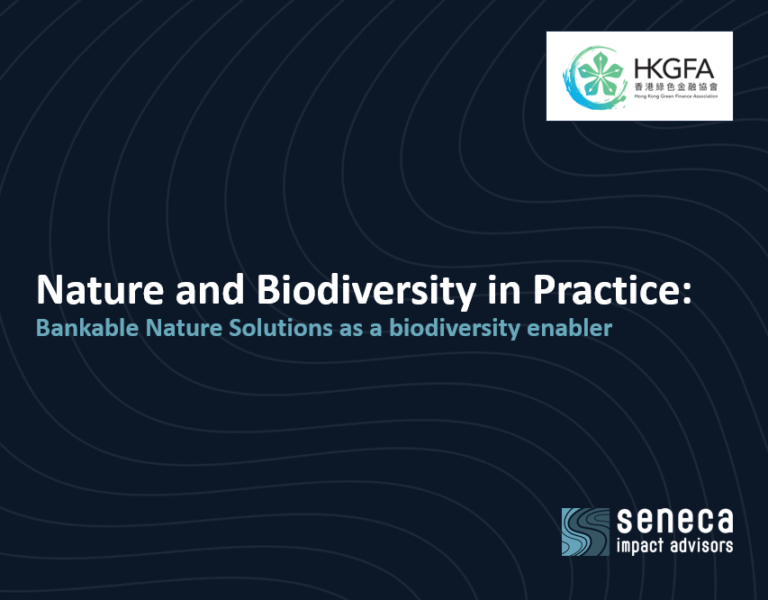Modern agriculture is one of the world’s biggest industries, employing roughly 1 billion people as of 2018, and being expected to grow in value from US$13,398 billion in 2023 to US$19,007 billion by 2027. However, rising demand for agricultural products has led to a proliferation of intensive farming practices designed to maximise output, often at considerable environmental cost.
For instance, soybean production in Brazil has led to large swathes of natural habitat being cleared for monocultures, while repeated plowing has eroded 55 million tons of topsoil per year, exhausting soil fertility and productivity. Globally, agriculture is responsible for 70% of freshwater withdrawals, produces 26% of greenhouse gas emissions and is a leading cause of habitat and biodiversity loss, among many other impacts. At a time when we must rapidly adapt to become more sustainable, our current food system is clearly not fit for purpose.
Fortunately, as awareness of these flaws has grown, another model of food production has started becoming more mainstream, one that avoids (and can even reverse) the destructive outcomes of conventional agriculture: agroforestry.
What is Agroforestry?
Agroforestry is a system of food production in which trees and shrubs (ideally of multiple species) are intentionally retained or planted within an agricultural landscape – in other words, producing food or other products like timber within a forest instead of cutting one down. Throughout history, it has been a major means of food production and income generation in various regions at various points in time, but today is practiced mainly in tropical and sub-tropical areas.
Environmental Benefits
As you might expect from a system that conserves and/or grows trees instead of cutting them down, agroforestry has a whole slew of environmental benefits compared to conventional agriculture.
Creation and Preservation of Habitats
In lands previously degraded by deforestation, agroforestry can be a useful means of both restoring forests and providing an economic incentive to conserve them. In Indonesia for instance, the conservation NGO Masarang has achieved this through agroforestry initiatives centered around the Arenga sugar palm, which can not only grow on degraded land, but will only grow successfully if planted alongside a diverse range of plant species. Additionally, Masarang has ensured that the profits from Arenga palm products go primarily to the local people producing them, thus incentivising them to preserve and restore the forest to grow more Arenga palms. Through this, Masarang has planted over 35 million trees, while increasing the incomes of participant communities tenfold.

Biodiversity Conservation
Unsurprisingly, agroforestry also has considerable benefits for biodiversity, particularly when it closely mimics the structure of a natural forest. Agroforests can provide shelter, food, and breeding sites, and act as corridors for species to move between fragmented areas of natural habitat. As a result, multiple studies have found that agroforestry supports higher levels of biodiversity than any other agricultural system (though lower than those of natural forests).
Moreover, increased biodiversity and higher yields need not come at the expense of each other, as studies in Indonesia and Madagascar have found that producing higher yields in agroforestry plots did not result in reduced species richness. In fact, increased biodiversity can actually benefit farmers economically. For instance, higher bat and bird populations can increase yields by keeping pest insects under control, thereby also saving farmers money in pesticides.
Climate Change Mitigation
Anything that protects or plants trees is bound to have climate benefits, and agroforestry is no exception. As well as storing carbon in plants themselves, agroforestry systems also store significant amounts in the soil. Additionally, studies have found that carbon sequestration and stocks of agroforests increase with tree species diversity, and increase further with tree growth.
Globally, land used for agroforestry covers over 1 billion hectares. According the estimates of one study, this amounts to 0.73 gigatons of carbon being removed from the atmosphere per year over a 10 year period, and around 45 gigatons being stored worldwide. Given these values, converting even a fraction of the estimated 630 million hectares of unproductive land that could be converted to agroforestry could have enormous potential for carbon sequestration. That said, carbon sequestration is generally higher in fertile, humid, tropical agroforestry sites than in arid, semi-arid, degraded or temperate ones.
Soil Enrichment
Agroforestry can have a multitude of benefits for soil health. Nitrogen fixing trees like acacias can transfer atmospheric nitrogen into soil to increase and maintain fertility, reducing the need for artificial fertilisers. Tree roots can extract water from deep underground and bring it to the surface, increasing water availability for other crops and reducing soil salinity. They can also absorb and immobilise pollutants like pesticides and bind soils together to prevent erosion, helping to rehabilitate soils degraded by conventional agriculture.
Food Security Benefits
The ecosystem services of agroforestry also translate to greater food security. The ability to maintain good soil conditions and regulate pest numbers through predation allows for long term yield increases that can average 96% (depending on circumstances). Crucially, agroforestry can also increase the climate resilience of crops through increasing soil water content and reducing heat stresses due to the shading effect of trees.
Plant with Care
For all its benefits, agroforestry can have drawbacks if not done carefully. For instance, certain plants that are popular agroforestry species in their native regions have become serious invasive species when introduced elsewhere. There is also the risk that the economic benefits of agroforestry could incentivise the conversion of primary forests or species-rich grasslands to agroforests, or that high human populations around them will depress biodiversity. Thus, the benefits of agroforestry will always be dependent on careful management, which will require scientifically informed decisions and adequate training.
Growing Money on Trees?
Despite agroforestry’s significance to food security and the environment, private investors have historically been hesitant to invest in it. For one thing, it has no standard practical definition, which decreases interest from impact investors. Moreover, it is an inherently variable and complicated investment, being heavily influenced by a wide range of factors from climate to markets to the exact model of agroforestry used. It is also slow to generate significant returns, as produce –particularly that from trees– can take years to become marketable.
With that said, agroforestry can still be a good investment, assuming the above parameters are understood by investors and additional revenue streams like carbon credits can be utilised to enhance returns for projects. In addition, agroforestry produce is increasingly seen as being of higher quality and therefore higher value by markets, with some estimates placing the returns of agroforestry at eight times higher than those of conventional agriculture.
As awareness of the financial and climate benefits of agroforestry has grown in recent years, so too have investments in it. One particularly noteworthy example was the approval of US$60 million by United States Department of Agriculture (USDA) for a 5 year project to scale up agroforestry in the USA (where it currently makes up just 1% of agriculture). Over a 20-year period, it is estimated that this investment could lead to the conversion of 80 million acres of land to agroforests, sequestering 3-6% of the country’s 2020 emissions.
However, agroforestry investments (particularly for small-scale projects) still remain limited, restricting its ability to expand. It is therefore important to continue educating investors on the benefits of investing in agroforestry, and to de-risk and incubate projects to become reliably profitable. Blended finance offers one potential tool for this, financially supporting projects until they can become viable enough on their own, whilst identifying and addressing potential risks in the meantime. Indeed, this approach has already been used to convert 7,231 hectares of degraded land to agroforests in Brazil. Additionally, credit availability and incentive schemes can also be useful in overcoming the initial investment costs and low returns early on.
For the unsure impact investor, Seneca offers services directing them to profitable agroforestry projects with tangible benefits for the environment. Shade-grown coffee agroforestry is particularly good in this regard, as growing coffee under indigenous tree cover has a multitude of environmental benefits that can ultimately boost profitability. For instance, it can provide habitat for birds that reduce losses from insect pests, and coffee planted alongside nitrogen fixing plants can also enjoy higher yields as a result. Moreover, shade-grown coffee is considered more valuable by coffee markets and is often bought at a price premium, offering greater benefits to farmers and (potentially) investors.
Going forward, it will also be important to establish agreed-upon eligibility standards for agroforestry projects to receive investment, based on how climate and nature positive they are. At present, the lack of a standard definition of agroforestry creates a lot of potential for greenwashing, in which agroforestry can defined as whatever a company or project leader see fit, even if a project uses non-native crops or otherwise lacks meaningful environmental benefits.
If agroforestry can receive the investment it needs to scale up and be a serious alternative to conventional agriculture, it could do a lot to create the nature positive, climate resilient food system we will need in the future. In that case, we may just be able to have our cake and eat it too.
Author: Seneca Impact Advisors
For more information, please contact impact@senecaimpact.earth






